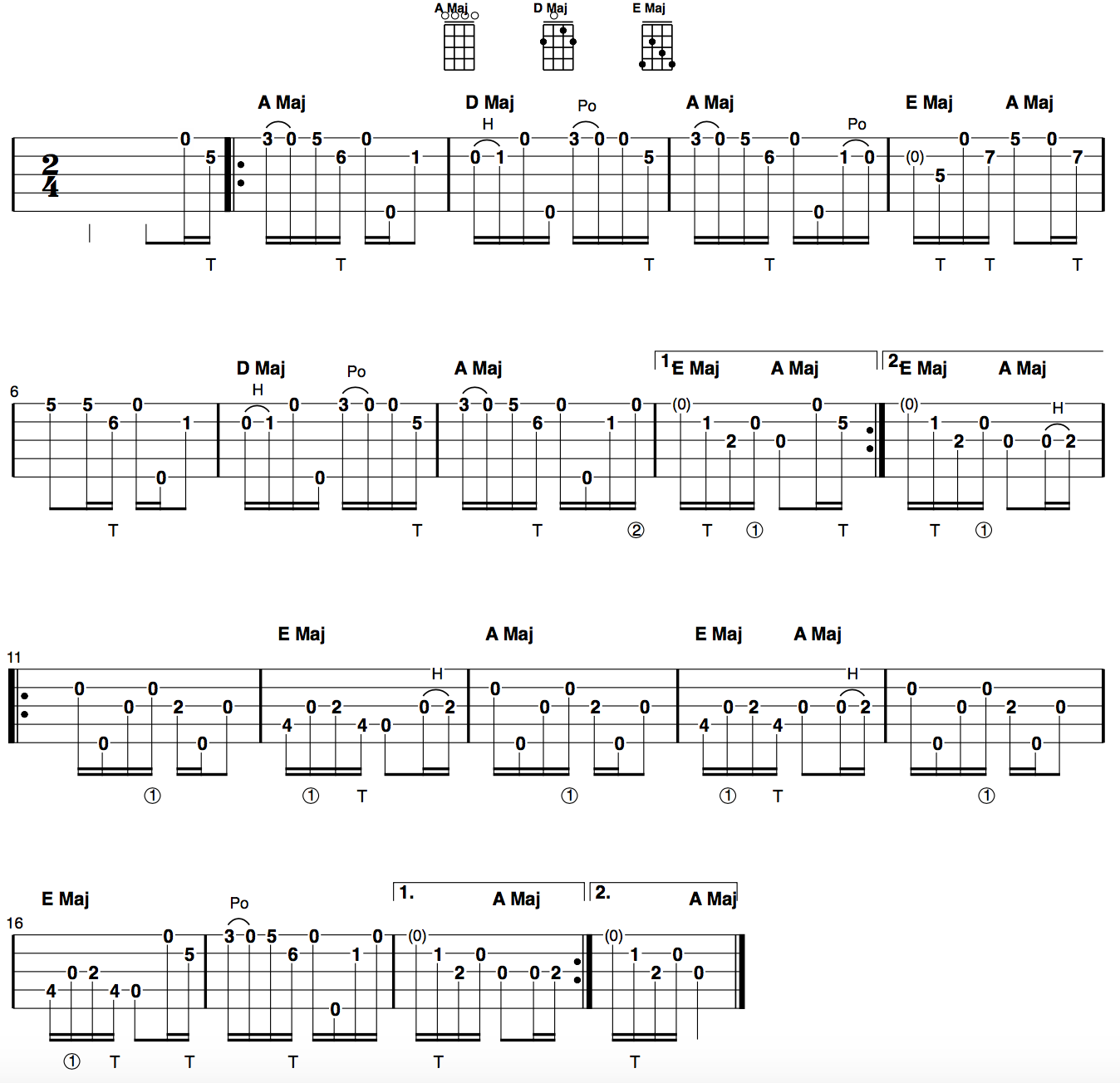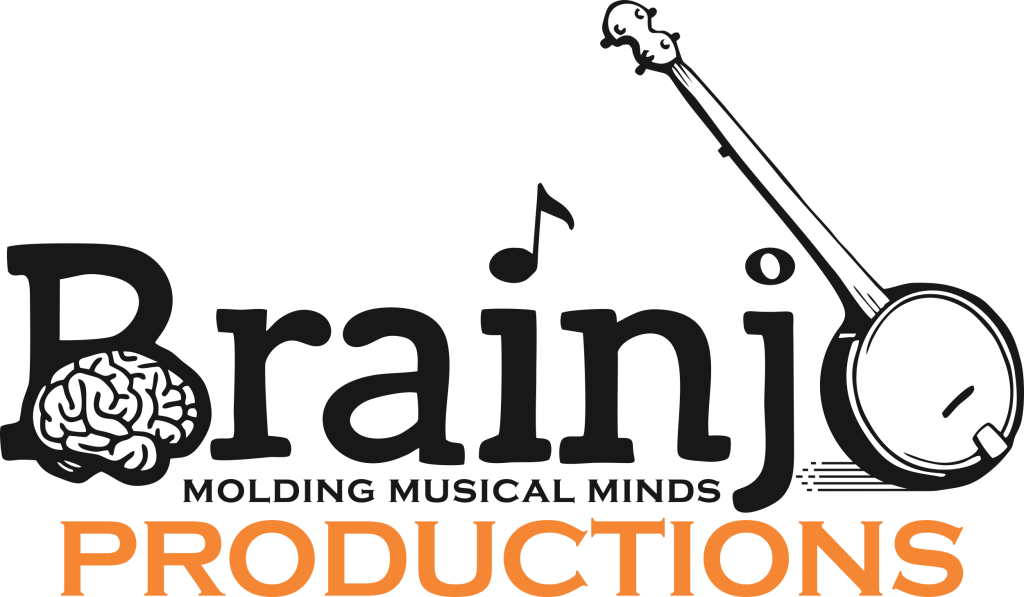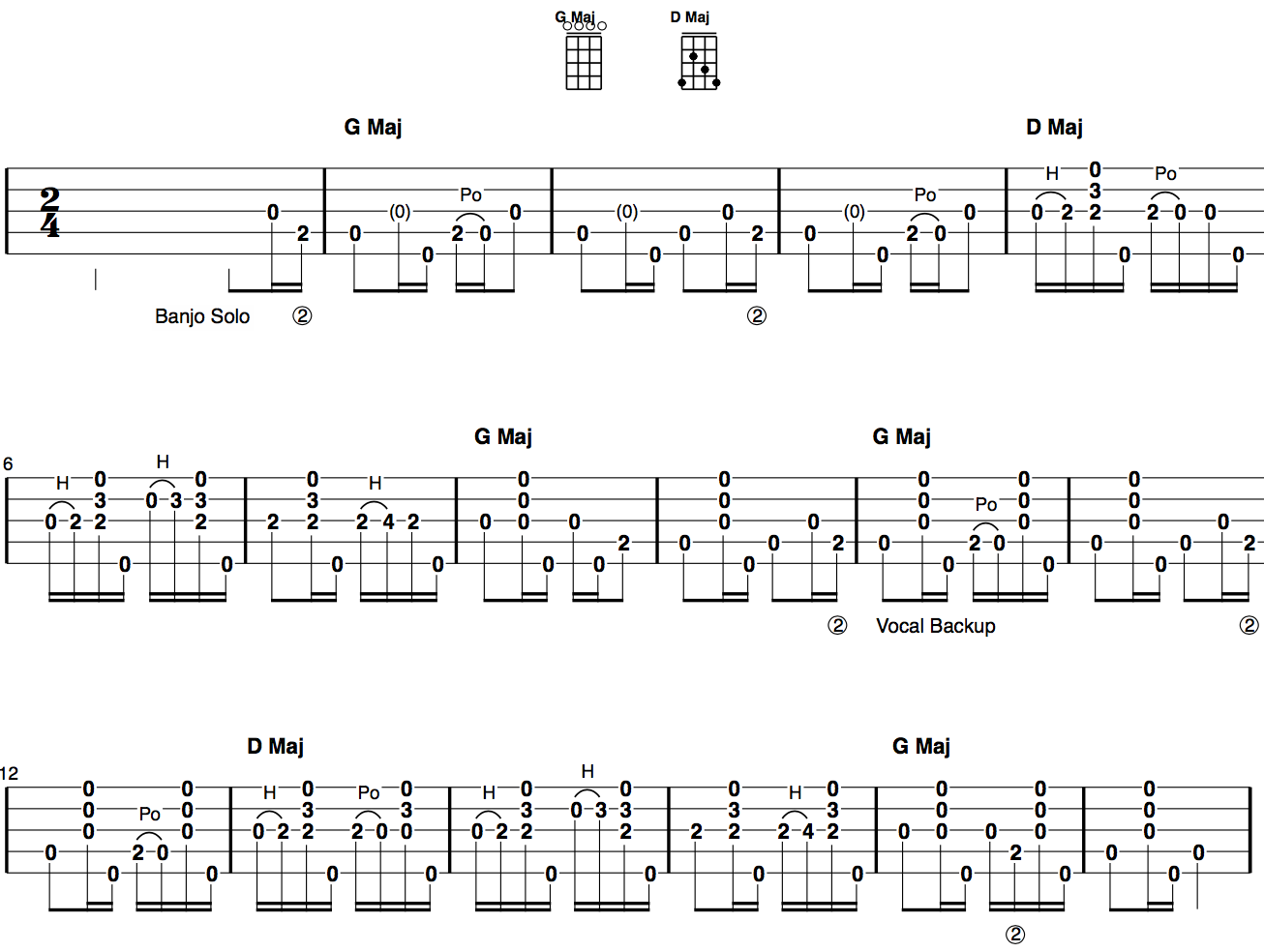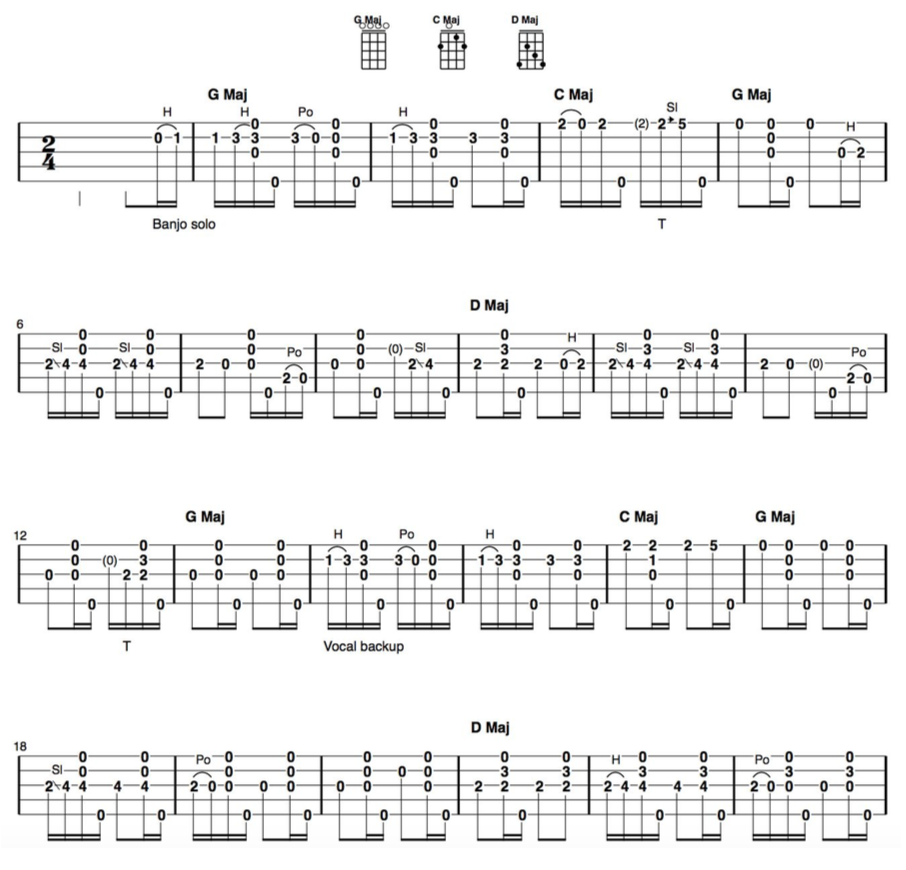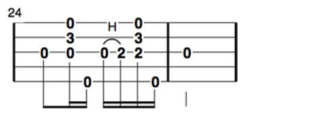Banjo Core Repertoire Series, Essential Fiddle Tunes Edition
Ready for a new edition of the Banjo Core Repertoire Series? Of course you are!
This time around, we’ll be tackling some of the best music ever to emerge from the rubbing of gut to horsehair. In other words…fiddle tunes!
Here’s a video preview of what’s to come (you can also grab the tabs by clicking below the vid):
Click Here To Get The CLAWHAMMER Tab
Click Here To Get The FINGERSTYLE Tab
As you might surmise after watching it, each episode this season will include an arrangement for both fingerstyle and clawhammer banjoists, along with a demonstration of both arrangements together to maximize your banjo bliss quotient!
Clawhammer banjoists, especially those steeped in the old time tradition, also tend to play way more fiddle tunes, since those are the most common musical form in old time jams.
Which means we get to draw from the entirety of the traditional fiddle tune catalog in this series, rather than restricting our material to the narrow set of fiddle tunes that are part of the common bluegrass repertoire. For the fingerpickers out there, that means getting to learn some fantastic material you may have never heard before.
Those of you who’ve been following along with the Core Repertoire series, or are familiar with the Brainjo method, know that our objective here will not only be to teach you some great tunes on the banjo, but more importantly to teach you the process behind how we figure out what to play on the banjo.
And while we’ve covered this process before, as you’ll discover this season, the process of adapting a fiddle tune for the banjo represents a special circumstance – and is a process different than the one we might use for other types of material (and one we’ve covered in prior installments), especially if our goal is to capture all of the notes that the fiddle might play.
Fiddle Tunes on the Banjo: what’s the big deal?
The banjo and fiddle are one of the great musical duos in all of music. In the days before commercial music, it was this combination that captured the trademark sound of dance music in the southern US and beyond.
Naturally, then, fiddle tunes remain a central part of the traditional banjo repertoire.
In the classic fiddle-banjo combo, more often than not the banjo plays a mix of rhythm, melody, and drone, playing to its strengths, while the fiddle carries the melodic line.
But, in recent years, more players have enjoyed the challenge of trying to play all the notes of the fiddle on the banjo, an especially useful thing to do when one is playing a fiddle tune solo, or taking the lead role.
Newcomers to the banjo may not fully appreciate why doing this sort of thing represents a special challenge, so let’s set the stage.
You see, the historical African antecedents of the banjo began more as instruments of percussion and droning than melody.
Modifications over the years to both the form and style of the banjo included adding strings, and the creation of new ways of playing it – modifications made in part to allow for the symbiotic blend of rhythm, drone, and melody that gives the 5-string banjo the sound we now all know and love.
The unique form of the 5-string banjo, and the styles commonly used to play it – whether clawhammer or fingerstyle – serve to fully capitalize on this unique strength.
But with any strength comes weakness. And we come square up against that weakness when trying to play fiddle tunes on the banjo.
There are two primary reasons why this is so:
REASON 1: The creation of particular rhythms on the banjo, in both clawhammer and fingerstyle, is made possible by the use of particular patterns of picking. These patterns are what give the banjo its pulse and drive. So, when we don’t maintain those patterns, we lose that pulse and drive.
REASON 2: The short 5th string on a 5-string banjo is what makes it a drone instrument in principle. Making it a drone instrument in reality requires that we pick that 5th string often.
Both of these elements are essential to the iconic sound of the 5-string banjo, and dropping either of them invariably compromises some of the banjo’s special magic.
The busier a tune, or the more melody notes there are in each measure, the more challenging it becomes to include these patterns, drones, and melody notes. Something has to give.
Sudoku for the Banjo Enthusiast
There are a few strategies that have been used over the years when it comes to the playing of fiddle tunes on the banjo:
The Scruggs style approach. With the “Scruggs” strategy, you don’t worry about playing all the notes. Instead, the idea is to “suggest” enough of the melody by playing some of the most essential notes. This was the approach typically taken by Earl Scruggs (with a few exceptions), and it’s one that works perfectly well – and is probably ideal – in a band setting, when there are other instruments around to carry the melody.
Single string approach. With the “single string” strategy, you don’t worry about preserving the rhythm and drone, and focus mainly on playing the melody notes. Oftentimes, multiple melody notes are played on a single string, hence this is sometimes referred to as “single string” style.
The drawback of this approach, as you can surmise, is that much of the special banjo magic is lost, as we’re abandoning those rhythmic patterns upon which our melody is typically laid atop. As a result, the sound is indistinguishable from what one might hear on a flatpicked 6-string banjo (which lead some to ask why restrict yourself to the limitations of the 5-string), and much of the drive and pulse of the banjo is sacrificed.
The single string approach works best if you’re playing in a band setting and if your goal is mainly to play music with a banjo tone, with other instruments providing the rhythmic support that the banjo now lacks.
“Melodic” style. The 3rd strategy, for those who dare, is to try have your cake and eat it too. In other words, to try to include all of the melody notes, without sacrificing our two essential elements of special banjo magic above. To retain our beloved blend of rhythm, drone, and melody even whilst the odds are stacked against us.
In this series, we will be attempting the 3rd strategy. We will attempt to have our cake and eat it, too.
As you will discover, meeting this challenge is like solving a puzzle. Fans of Sudoku and other puzzles will especially enjoy the process.
And while this strategy is perhaps the hardest to pull off well, requiring both considerable forethought in the arranging and successful execution of said arrangement, the rewards of pulling it off are also great.
What you’ll also find is that simply changing the way a particular series of notes is fingered and fretted can radically alter the level of difficult. In some ways, there are no easy or hard tunes, just easy or hard arrangements of those tunes. And what’s great for us is that the easier we can make our arrangement, the better things will end up sounding.
Both the clawhammer and fingerstyle arrangements of Boatman you hear in the video above were created using the have-your-cake-and-eat-it-too approach to fiddle tunes on the banjo. In the next installment, we’ll work our way through the process of solving the puzzle to create those two arrangements.
For those of you eager to learn the tune, you can grab the tab by clicking on the relevant link below:
Click Here To Get The CLAWHAMMER Tab
Click Here To Get The FINGERSTYLE Tab
To learn more about the Breakthrough Banjo courses for clawhammer and fingerstyle banjo, click the relevant link below:
— Breakthrough Banjo for CLAWHAMMER Banjo —
— Breakthrough Banjo for FINGERSTYLE Banjo —
— The Laws of Brainjo Table of Contents —



